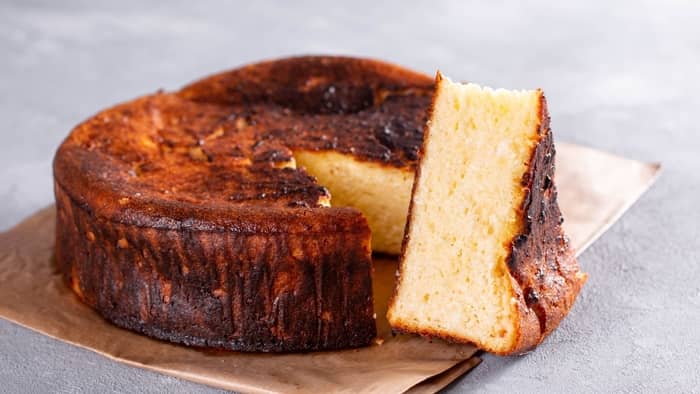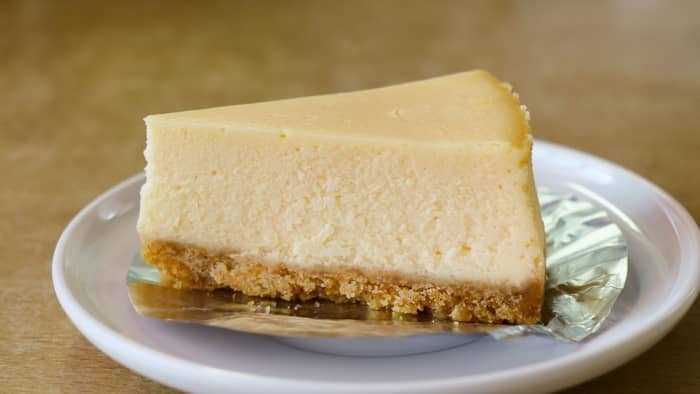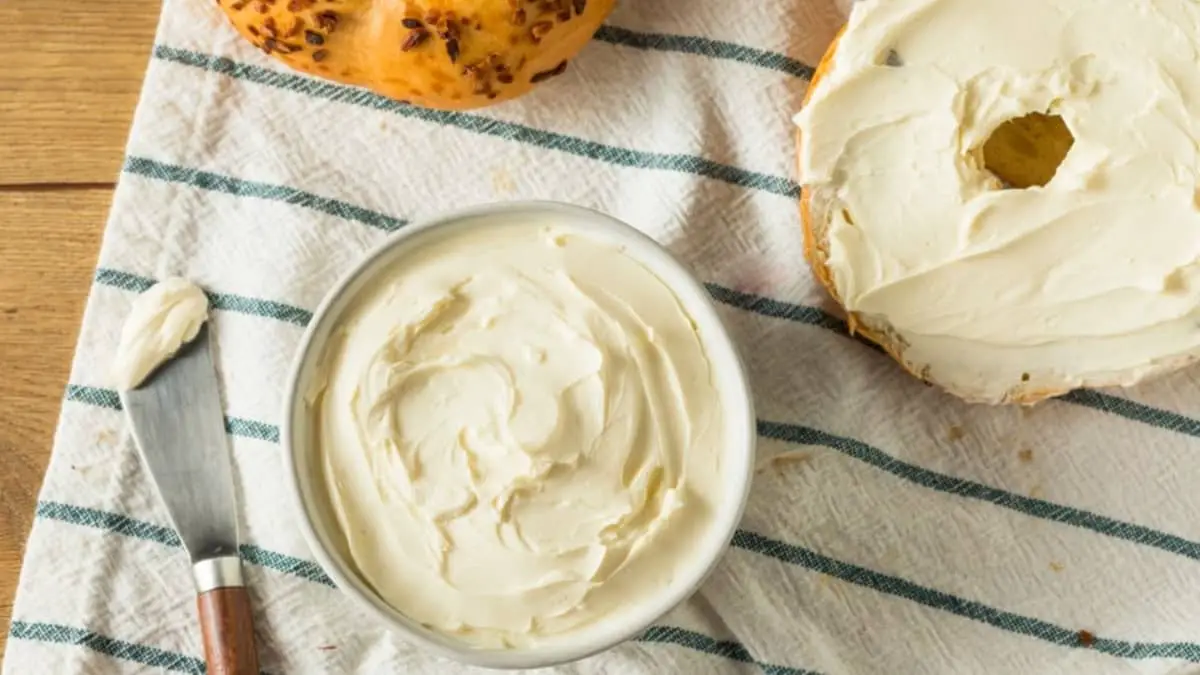By Gabriella V., last updated on October 6, 2022
Let’s find out the answer to “Will lumpy cheesecake taste bad?” in the next paragraphs! There are few desserts as delicious as cheesecake. It can be quite a lengthy process before you can enjoy that slice of cheesecake, but it will be oh so worth it.
But let us not be fooled; it’s not the easiest dessert to make and does take a fair bit of effort and time. And after all the preparation and cooking time, you would hate to ruin the filling and your cheesecake to end up being lumpy.
But with my tips below, you can avoid these pesky little lumps- and if they do occur, how you can fix them?
Why is Your Cheesecake Lumpy and How To Prevent This From Happening?
First off, lumps in cheesecake do happen- but relax, you can fix them!

Clumps in the sugar
One of the first reasons the mixture could be lumpy is sugar. Clumps of sugar will result in lumps in your cheesecake batter.
Make sure you sieve the castor sugar before adding it to the cream cheese. This will ensure no hard lumps of sugar will be incorporated into the cheesecake filling.
Cold ingredients
Cold ingredients can also cause lumps in your mixture. If your eggs and cream cheese are too cold, they won’t be able to emulsify together properly.
Make sure all your ingredients are at room temperature before mixing them. You want all your ingredients to be at the same temperature so that they can combine nicely.
Leave your eggs out to come to room temperature; if you are pressed for time, you can pop them into some warm water to bring them to room temperature quicker.
The cream cheese should also be at ambient temperature and can be “zapped” in the microwave, if need be, for a quick 15 seconds just to warm up slightly.
With this simple hack, I promise you will be able to combine your ingredients with ease.

Adding the eggs too fast to the mixture
Adding the eggs to the cheesecake mixture needs to be done carefully.
When adding the eggs to the cream cheese, make sure you add this slowly, bit by bit, while mixing the cream cheese constantly.
Incorporating too many “wet” ingredients doesn’t allow the mixture to bind to form a smooth texture and causes the mix to go lumpy or, even worse, split.
To prevent this, whisk the eggs in a bowl, and then slowly add the egg while mixing the cream cheese the entire time.
Baking the cheesecake at a higher temperature
To prevent this from happening, you should bake your cheesecake in a water bath, which will ensure an even, slow baking, resulting in a smooth, creamy-textured cheesecake. Unfortunately, you can not rectify this once the cheesecake is baked- it is too late to try and fix it. So be sure not to overcook yours now that you know how not to.
Overcooking the cheesecake
Overcooking the cheesecake will not result in a lumpy cheesecake, but t will be slightly grainy and not smooth and creamy as it should be.
And it will take on a more “eggy” flavor. This has happened because the cheesecake has been overcooked or baked at too high a temperature.
This high heat and overcooking cause the egg proteins to coagulate faster than the rest of the batter, resulting in a grainy texture and egg flavor.

How To Fix Lumpy Cheesecake Batter
1. Use a sieve to strain out the lumps
One way to fix your lumpy mixture if it’s pourable consistency put it through a sieve. Simply pour the cheesecake batter through a sieve to catch the lumps. These lumps are more likely to be lumps of cream cheese or sugar that can be pushed through the to break up.
2. Use a whisk or food mixer to mix out the
Another way of fixing a lumpy cheesecake batter is to whisk it up fast in the hope that you will be able to break up the lumps. This will be easier if the batter is slightly thicker; if it is more liquid-like, this will be very hard to do, and you will be better off using the sieve method to strain the lumps out.
3. Heating the mixture slightly
If the ingredients were really cold, to begin with, this would also result in lumps. You could try placing the batter in a bowl over hot water, and this will help soften the lumps of cream cheese and make it easier to incorporate them back into the mixture.
Be careful though that the water is not too hot! You do not want to “cook” the batter in any way but instead warm it slightly so all the ingredients can emulsify together nicely.

In Conclusion: Will Lumpy Cheesecake Taste Bad?
Absolutely not! If all the ingredients have been added, there is no reason for your cheesecake to taste bad. Some mouthfuls might have a pop of extra sweetness from the lumps of sugar, and some bites may have a more savory taste from the lumps of cream cheese. But by no means will the cheesecake taste bad. The lumps will obviously affect the texture of the cheesecake but nothing that will make it inedible.
If the cheesecake is slightly grainy in texture, it might have a slight “eggy ” taste. Not many would pick up on this, but those who are cheesecake connoisseurs will be aware of this. But again, nothing worth not eating the cheesecake!
So as you can gather, cheesecake is something to master, but once you have a fail-proof recipe- you’ll be making it for every dessert occasion. And your friends will be suitably impressed!
I like to serve my cheesecake with baked stoned fruit. Peaches and Nectarines are my best – and their baked juices make the best syrup to accompany the cheesecake. The tartness of the fruit juices, together with the sweet creaminess of the cheesecake, is a combination everyone will love!
It’s worth giving a try.

